Drones are revolutionizing perspectives from above, but their operational limits vary significantly based on several factors. Understanding the range limits of drones is crucial for maximizing their potential in various applications and ensuring compliance with aviation regulations.
This article will focus on the factors that influence a drone's flight range, strategies for increasing that range, and the differences in flight capabilities across various uses and brands.
Whether you are a hobbyist, a commercial user, or involved in law enforcement, this guide aims to provide valuable insights to help you effectively manage and expand the operational scope of your drone.
What Determines the Flight Range of a Drone?
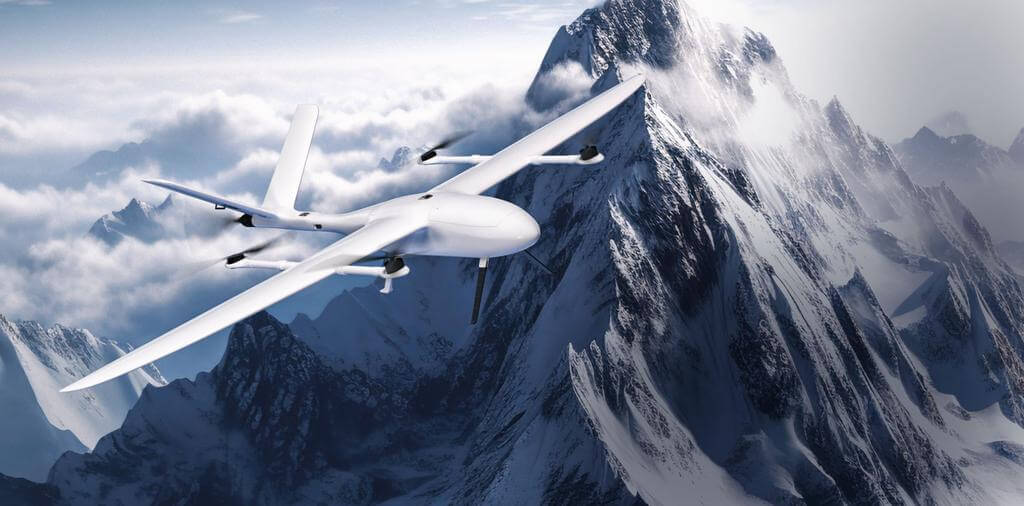
Understanding the factors that determine the flight range of a drone is crucial for both enthusiasts and professionals. Various aspects of a drone's design, environmental conditions, and operational variables all contribute to how far and how long a drone can fly.
1. Drone Design and Components
Battery Capacity: A fundamental factor that directly impacts flight range is the drone's battery capacity. Drones with larger batteries can generally fly longer distances. However, larger batteries also increase the drone's weight, which may counteract some of the range benefits.
Drone Size and Weight: The overall size and weight of a drone determine its energy consumption. Heavier drones require more power to maintain flight, which can reduce their range.
Propulsion System: The efficiency of the drone's motors and propellers plays a crucial role in maximizing flight range. More efficient motors that provide higher thrust with less power consumption contribute to longer flight durations. The design and material of the propellers also affect how effectively motor power is converted into thrust.
Design Optimization: The integration of advanced materials and innovative design approaches can significantly enhance a drone's performance. For example, using lightweight composite materials can reduce overall weight without sacrificing durability, allowing for greater range and flight efficiency.
2. Environmental Conditions
Weather Conditions: Wind, rain, and temperature play significant roles in drone performance. Wind can especially impact a drone's range either positively (tailwind) or negatively (headwind). Extreme temperatures can affect battery performance, reducing the energy available for flight.
Altitude and Air Density: Flying at higher altitudes can sometimes extend a drone's range due to thinner air reducing drag, though this can also affect engine and propeller efficiency.
3. Operational Factors
Flight Dynamics and Control: The style of flying (aggressive maneuvers vs. stable flight paths) and the efficiency of the flight control system can affect how much energy is used during flight.
Payload: The weight of additional payloads like cameras or sensors increases the energy required for flight, reducing the potential range.
4. Technological Enhancements and Maintenance
Signal Strength and Control Technology: The technology used in the drone's remote control system can limit or extend the effective operational range if the signal strength is robust enough to maintain control over longer distances.
Maintenance: Regular maintenance of the drone, including battery care and firmware updates, is crucial for optimizing performance and range.
5. Regulatory and Ethical Considerations
Regulations: Legal restrictions on drone operations, such as the maximum allowed distance from the controller or specific altitude limits, can also dictate how far a drone can fly.
How Far Away Can You Fly a Drone Legally?
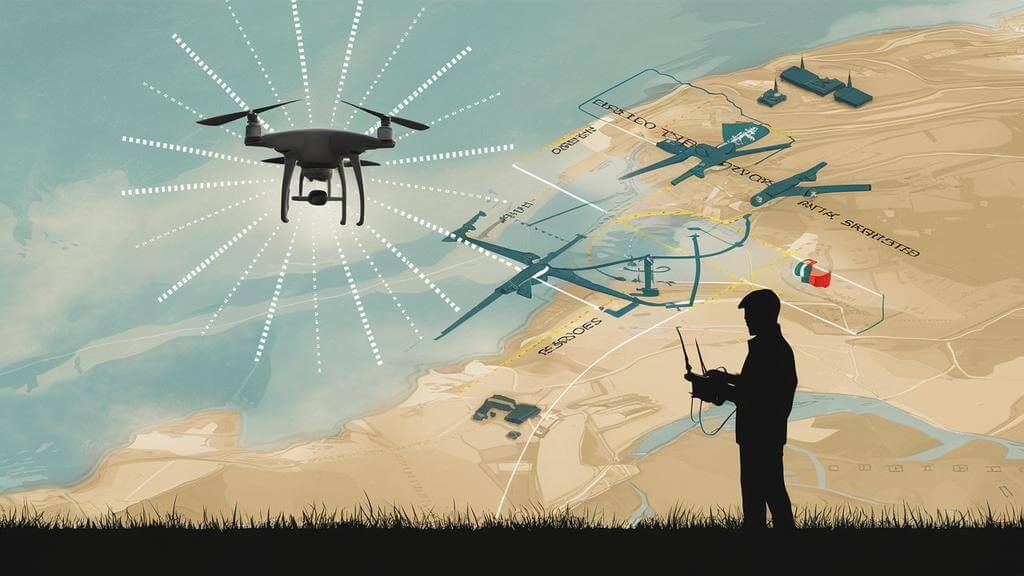
In the United States, the Federal Aviation Administration (FAA) requires that drones be flown within the visual line of sight (VLOS) of the operator or an accompanying observer. This means the drone must remain visible to the operator without any visual aids, such as binoculars, restricting the drone's operational range to approximately 0.25 to 0.5 miles under typical conditions, influenced by factors such as drone size and weather.
Similar VLOS requirements exist in many countries around the world, emphasizing the universal priority of safety in drone operations. These regulations ensure drones do not pose a risk to other airspace users or people on the ground, and help to prevent conflicts with manned aircraft and other potential hazards.
Beyond Visual Line of Sight (BVLOS) Operations
While standard regulations restrict drone operations to within visual line of sight, Beyond Visual Line of Sight (BVLOS) operations permit drones to fly beyond this range. BVLOS capabilities represent a significant advancement for commercial drone use, enabling activities such as delivery services, infrastructure inspections, and large-scale agricultural monitoring. These operations, however, involve greater risks, prompting stringent regulatory requirements.
Regulatory bodies worldwide mandate comprehensive safety assessments and special permissions for BVLOS operations. These requirements ensure that drones equipped for BVLOS have advanced navigational technologies, robust communication systems to maintain contact with the operator, and sophisticated sensors and software for obstacle avoidance and autonomous operation.
How Do Different Types of Drones Vary in Flight Range?
How Far Can a Military Drone Fly
The range of military drones depends on their design and purpose, encompassing small tactical units to large high-altitude long-endurance (HALE) drones.
Small Tactical Drones: These drones, like the FULMAR, typically have shorter range capabilities, about 90 kilometers, and can fly for up to 12 hours on a single mission.
Medium Altitude Long Endurance (MALE) Drones: Drones such as the MQ-9 Reaper can operate for extended periods, generally around 27 hours, covering much larger distances.
High Altitude Long Endurance (HALE) Drones: These include drones like the RQ-4 Global Hawk, which can fly at altitudes up to 60,000 feet with a range exceeding 12,000 miles and endurance capabilities of up to 34 hours, enabling them to undertake missions across continents.
How Far Can a Commercial Drone Fly
Commercial drones can vary significantly in range depending on their design and the technology they employ. Typical multi-rotor commercial drones can fly from 10 to 15 kilometers. However, for extended range requirements, fixed-wing commercial drones are more suitable, capable of reaching distances up to 100 kilometers. These longer ranges are ideal for applications such as large-area mapping and surveying, where the ability to cover vast territories efficiently is crucial.
How Far Can a Police Drone Fly
Police drones vary widely in their capabilities, with some advanced models capable of flying up to 200 kilometers on a single mission, making them suitable for extensive surveillance and long-duration operations. More commonly, police drones are used for tasks that require a range of up to 15 kilometers, sufficient for applications such as monitoring traffic, managing crowds, and tactical deployments. These ranges allow law enforcement to effectively cover large areas quickly, enhancing their ability to respond to incidents and manage public safety efficiently.
Different Brands and How Far Their Drones Can Fly
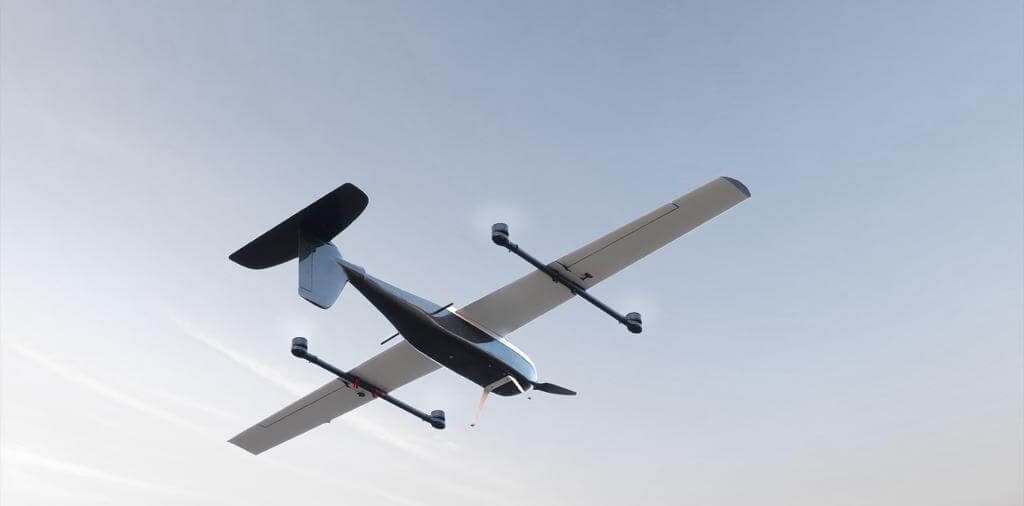
Here is a comparative overview of various drone models from different brands, highlighting their maximum control ranges and flight times:
| Product | Max Control Range | Max Flight Time |
|---|---|---|
| DJI Matrice 300 RTK | 15 km | 55 minutes |
| DJI Matrice 350 RTK | 20 km | 55 minutes |
| DJI Matrice 30 | 7 km | 41 minutes |
| DJI Mavic 3 Pro | 15 km | 43 minutes |
| DJI Air 3 | 20 km | 46 minutes |
| DJI Mini 4 Pro | 20 km | 45 minutes |
| DJI Avata 2 | 13 km | 23 minutes |
| DJI Phantom 4 RTK | 7 km | 30 minutes |
| DJI Agras T30 | 5 km | 20.5 minutes |
| DJI Tello | 0.1 km | 13 minutes |
| T-DRONES VA23 | 30 km | 240 minutes |
| Parrot ANAFI Ai | 22.5 km | 32 minutes |
| Parrot Bebop 2 | 2 km | 25 minutes |
| Autel EVO II Pro V3 | 15 km | 40 minutes |
| Autel EVO Max | 20 km | 42 minutes |
| Autel Dragonfish Pro | 30 km | 158 minutes |
| Holy Stone HS720 | 0.9144 km | 26 minutes |
| Holy Stone HS600 | 3 km | 56 minutes |
The table above showcases the wide range of capabilities found in various drone models from brands like DJI, Autel, Parrot, T-DRONES, and Holy Stone. Notably, there are significant variations in both maximum control ranges and flight times, reflecting the diverse applications these drones are designed for. High-end models such as the T-DRONES VA23 and Autel Dragonfish Pro stand out with exceptional ranges up to 30 km and prolonged flight times—up to 240 minutes and 158 minutes, respectively. These features make them highly suitable for professional and commercial use, where extensive operational capacity and broad area coverage are crucial.
Conversely, consumer models like the DJI Mini 4 Pro and Holy Stone HS720 are tailored for much shorter flights, with maximum ranges of 20 km and 0.9144 km, and flight durations of 45 and 26 minutes, respectively. These drones are ideal for more localized tasks, catering to casual enthusiasts and hobbyists who require less extensive capabilities.
What Happens When a Drone Goes out of Range?
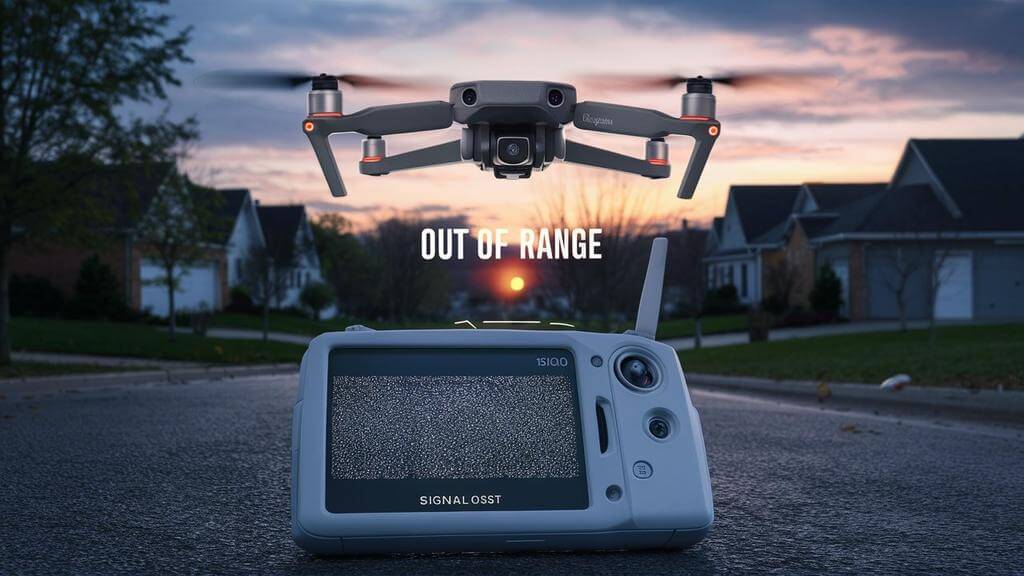
When a drone exceeds its communication range with the controller, several things can happen depending on the drone’s design and the technology it incorporates. The behavior of a drone going out of range varies significantly between different models and manufacturers.
Basic Reactions of Drones to Losing Signal:
Low-cost or Toy Drones: Cheaper or less advanced drones may simply lose power or control and fall to the ground when they go out of range.
Mid-level to High-end Consumer Drones: More sophisticated drones are usually equipped with GPS technology and have fail-safe features like automatic return-to-home (RTH). These drones can navigate back to their takeoff point if they lose signal.
Hover or Land: Some drones are designed to stabilize and hover in place until the signal is regained, while others may perform a controlled landing on the spot to prevent loss or damage.
Failsafe Features:
Return to Home: This is a common feature in many modern drones where the drone automatically returns to its starting location if the control signal is lost.
Smart Notifications: Advanced drones provide alerts on the controller or connected device (like smartphones or tablets), informing the operator that the drone is out of range. The alert often triggers the drone’s return-to-home procedure.
Manual Recovery Options: If the drone is still in a recoverable position, pilots might be able to manually bring the drone back within range or closer to the controller to reestablish connection.
Risks and Considerations:
Battery Levels: It’s crucial for the drone to have enough battery left to return home safely. A low battery during a signal loss situation can lead to the drone not making it back and potentially getting lost.
Sport Mode: Drones in sport or high-performance modes might not activate certain fail-safe features like return-to-home. Pilots need to be aware of this and should ensure they are prepared to manually recover the drone.
Environmental Factors: The actual range can be affected by obstacles, interference, and weather conditions, potentially leading to earlier-than-expected loss of signal.
How Can I Increase My Drone Range?
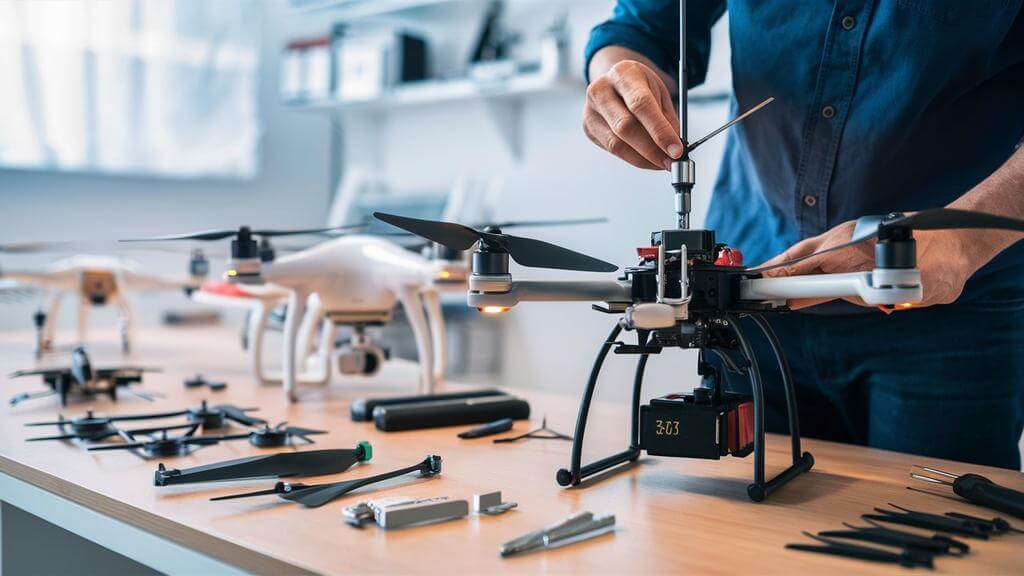
Increasing the range of your drone involves several strategies that can be implemented to enhance its operational capabilities. Here are some effective ways to boost your drone's range, drawing from a combination of advanced technologies and simple adjustments:
1. Optimize Antenna Placement and Selection
Antenna Positioning: Positioning the antennas on the drone optimally can significantly improve the signal strength and stability, thereby extending the range of flight.
Antenna Type and Gain: Using high-gain antennas can help focus the energy more efficiently and extend the drone's range. The choice of antenna materials and design also plays a crucial role in improving the range.
2. Reduce Signal Interference
Fly Higher: Gaining altitude can reduce interference from other signal sources like routers, power lines, or densely populated Wi-Fi areas.
Remove Obstacles: Ensure there are no physical obstructions like buildings or trees in the path of the drone's signal to the controller.
3. Modify Drone Settings
Firmware Updates: Regular updates can enhance the drone's signal strength and stability. Modifications in firmware can optimize the drone’s power output and communication protocols.
Optimize Transmission Systems: Implement advanced technologies such as frequency hopping and signal amplification to improve signal quality and range.
4. Use Range Extenders or Signal Boosters
Signal Boosters: These devices can increase the drone's communication range significantly. They work by enhancing the strength of the signal transmitted between the drone and the controller.
DIY Boosters: For those inclined to DIY solutions, creating homemade signal boosters can be an inexpensive option to extend range.
5. Be Mindful of Environmental Conditions
Weather Conditions: Operating a drone in optimal weather conditions (like on clear, sunny days) can prevent signal degradation caused by environmental factors such as fog or high moisture content.
6. Upgrade Software and Hardware
Software Upgrades: Ensure the drone’s software is up-to-date for optimal performance. Manufacturers often release software updates that improve connectivity and flight capabilities.
Hardware Modifications: Advanced users can modify hardware settings, like adjusting the antenna's power or enhancing its positioning to improve overall range.
FAQs
What Are the Classification of Drones Based on Range?
Drones can be classified by the distance they can cover and their endurance in the air. Here’s a simplified table that outlines the different classifications based on range:
| Drone Type | Flight Distance | Flight Time | Typical Uses |
|---|---|---|---|
| Very Close-Range | Up to 5 km | Up to 1 hour | Recreational use |
| Close-Range | Up to 50 km | 1-6 hours | Military surveillance, aerial photography |
| Short-Range | Up to 150 km | 8-12 hours | Surveillance, mapping, utility inspections |
| Mid-Range | Up to 644 km | Up to 24 hours | Military combat and surveillance |
| Long-Range | More than 644 km | More than 24 hours | Military surveillance, weather tracking, geographic mapping |
How Are Drones Controlled from Far Away?
Controlling drones over long distances involves a combination of technologies and methods that enable remote operation. Here’s a concise explanation of how this is achieved:
Remote Control: Most commonly, drones are operated through remote controls using radio frequencies, typically around the 2.4 GHz band. The remote control consists of a transmitter held by the pilot and a receiver on the drone. This setup allows the pilot to send commands to the drone which are executed in real-time.
Computer Interfaces: For more complex operations, drones can be controlled via a computer interface. This method is particularly useful for long-range drones that need precise navigation over extended distances. Pilots use software to map out flight paths, monitor the drone’s status, and even see what the drone’s cameras see, providing enhanced control for tasks like search and rescue or scientific research.
Advanced Communication Systems: Long-range drones use enhanced radio communication systems that maintain a connection over vast distances, beyond typical visual range operations. Some systems integrate satellite communication for global reach, allowing operators to manage drones from thousands of miles away.
Autonomy and Pre-programmed Routes: Many long-range drones incorporate a degree of autonomy, where they can perform pre-programmed tasks with minimal human intervention. Using GPS and onboard sensors, these drones can navigate and complete missions, only requiring remote input for adjustments or if something goes awry.
How Far from an Airport Can I Fly a Drone?
The distance from an airport where you can legally fly a drone varies depending on local regulations, which differ from country to country. Here, we will use the United States as an example, guided by FAA regulations. The type of airspace surrounding the airport is the primary factor determining where drones can operate legally. Here's a brief guide reflecting the latest FAA regulations in the U.S.:
Controlled Airspace (Class B, C, D, and E):
Distance: In the U.S., FAA authorization is required to fly within 5 miles of airports in controlled airspace to ensure drone activities do not interfere with manned aircraft operations.
How to Obtain Authorization: Pilots can obtain authorization through the FAA's LAANC (Low Altitude Authorization and Notification Capability) system, which offers real-time processing of airspace authorizations below 400 feet.
Uncontrolled Airspace (Class G):
Distance: In uncontrolled airspace, there are no specific distance requirements from airports for flying drones in the U.S., but operators must fly responsibly and yield to manned aircraft.
Responsibilities: While FAA authorization isn't required, it’s good practice to notify the airport management or control tower when planning to fly close to these airports.
It's crucial for drone operators to be aware of and comply with the local regulations in their respective countries. Tools like the FAA’s B4UFLY app are useful in the U.S. for checking current airspace restrictions and ensuring compliance with local drone flying laws.
